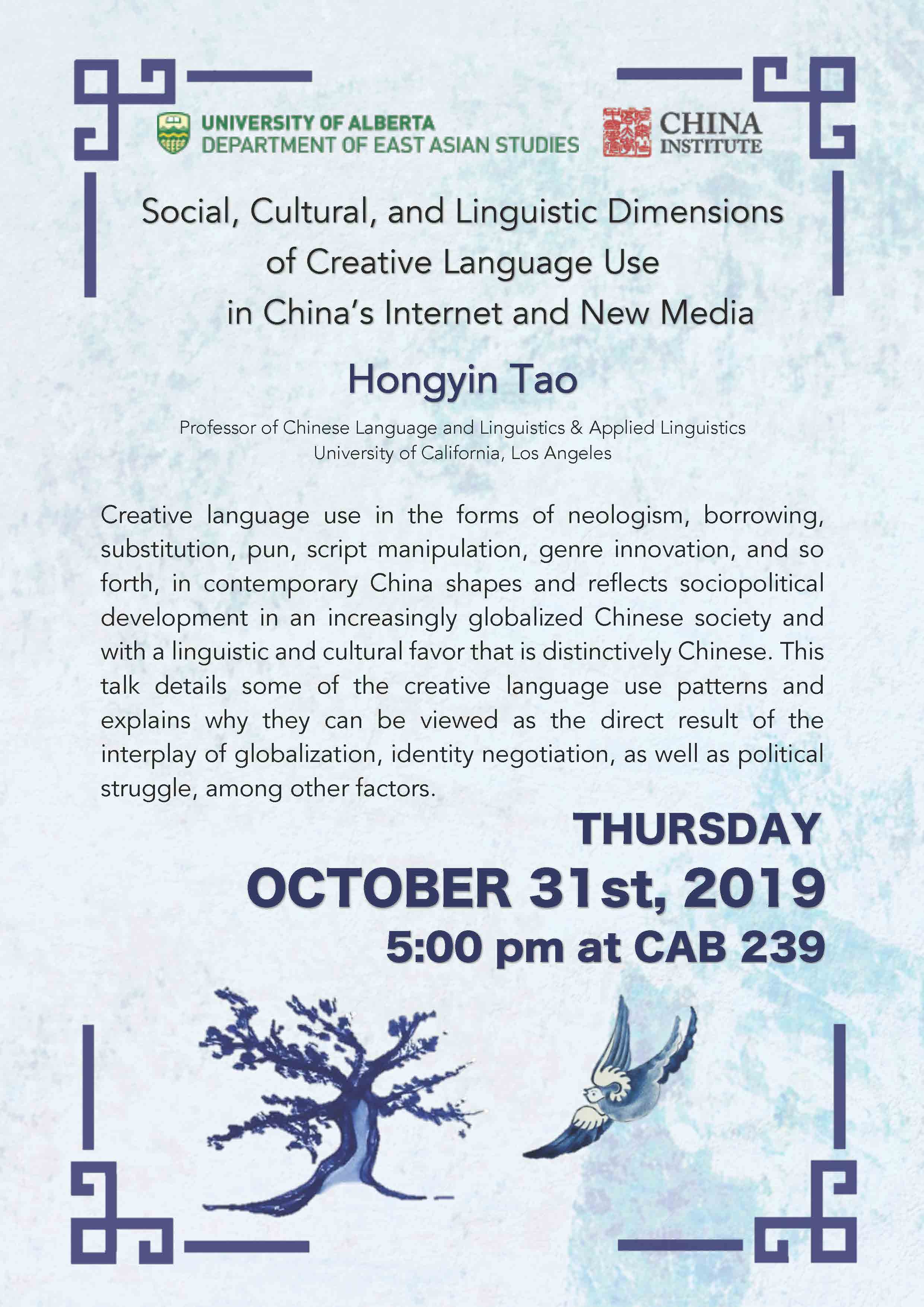
Abstract:
Creative language use in the forms of neologism, borrowing, substitution, pun, script manipulation, genre innovation, and so forth in contemporary China shapes and reflects sociopolitical development in an increasingly globalized Chinese society and with a linguistic and cultural favor that is distinctively Chinese. This talk details some of the creative language use patterns and explains why they can be viewed as the direct result of the interplay of globalization, identity negotiation, as well as political struggle, among other factors.
Speaker information:
Hongyin Tao is a professor of Chinese language and linguistics and applied linguistics at UCLA. His research and teaching focus on the social, cultural, and interactional aspects of Chinese language use in context. His recent books include Chinese for Specific/Professional Purposes (Springer, 2019) and Integrating Linguistic Research with Chinese Language Teaching and Learning (John Benjamins, 2016).
Creative language use in the forms of neologism, borrowing, substitution, pun, script manipulation, genre innovation, and so forth in contemporary China shapes and reflects sociopolitical development in an increasingly globalized Chinese society and with a linguistic and cultural favor that is distinctively Chinese. This talk details some of the creative language use patterns and explains why they can be viewed as the direct result of the interplay of globalization, identity negotiation, as well as political struggle, among other factors.
Speaker information:
Hongyin Tao is a professor of Chinese language and linguistics and applied linguistics at UCLA. His research and teaching focus on the social, cultural, and interactional aspects of Chinese language use in context. His recent books include Chinese for Specific/Professional Purposes (Springer, 2019) and Integrating Linguistic Research with Chinese Language Teaching and Learning (John Benjamins, 2016).